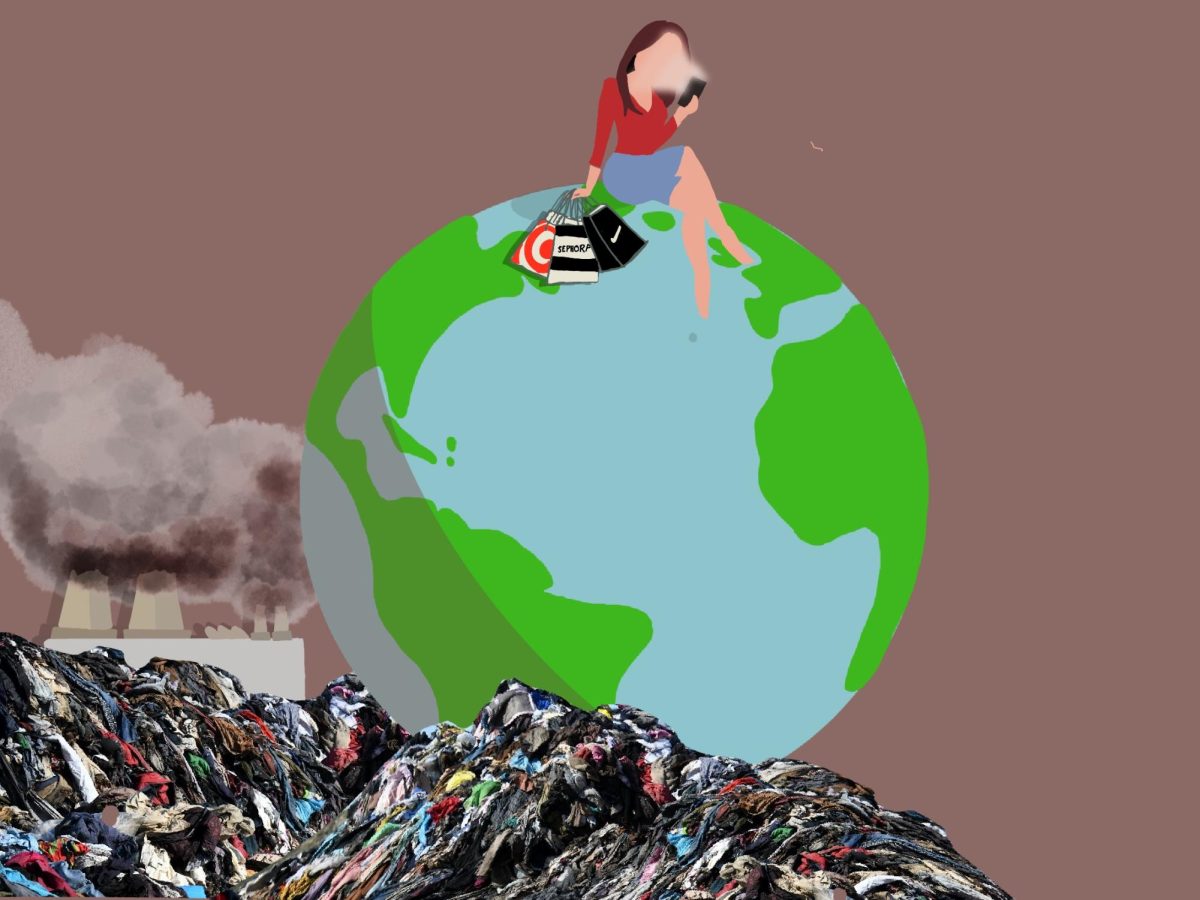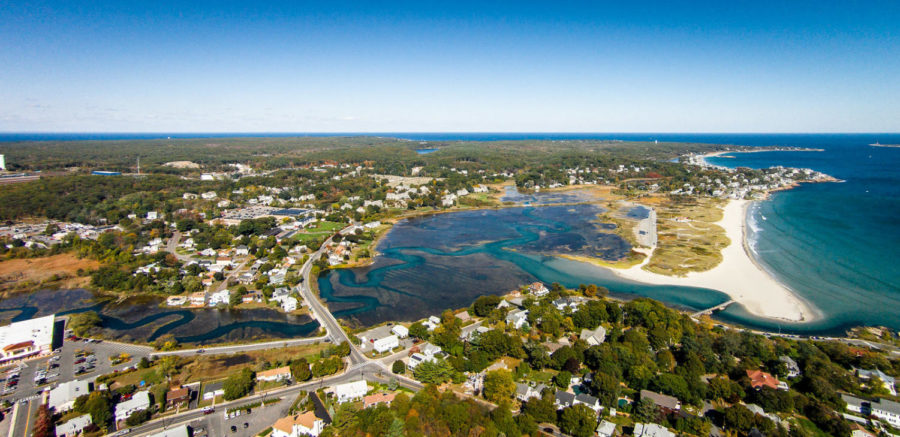On efforts to preserve Gloucester’s ecosystemic balance
Gloucester has had a long history of development, transforming it from a small settlement to a superpower in the fishing industry and a massive tourist hotspot. But Gloucester’s culture of industry and tourism without enough consideration for the environment has disrupted natural habitats and species and threatened its biodiversity. This, paired with a lack of regard for climate change, would not only ruin Gloucester’s beautiful biodiversity, but it could turn the relationship between Gloucester and the sea into a much more dangerous one.
For some, the altruistic desire to protect life around the globe is enough of a justification for preservation efforts. But for others, appeals to altruism are not sufficient cases to inspire them to support the preservation of endangered species and habitats. Conservation efforts protect ecosystems’ biodiversity and habitats, which ultimately promote human prosperity.
The most detrimental consequence of human threats to ecosystems is the imbalance in the global ecosystem. The process of evolution occurred slowly—over hundreds of millions of years—and occurred in a way that created ecologically balanced ecosystems. Most people recognize this ecological balance in the context of an ecosystem’s “food web,” or the balanced flow of energy from predator to prey. When one species in an ecosystem is threatened by human interference—through pollution, deforestation, overhunting, or any other threat to their habitat—the balance of an ecosystem begins to break down. As the changing state of an ecosystem threatens or kills off one species, every other species of animals and plants in the ecosystem are threatened.
This dynamic balance between species has allowed ecosystems to reach their balanced equilibrium. Species that overhunt begin to die off as they can no longer find prey, which allows for the prey to prosper as they have fewer predators, which allows the predators to prosper as they now have more prey. So, as species evolve, so too do ecosystems, until they reach balanced states. One important consideration is that, due to the speed and magnitude of human interference, it is incredibly difficult to re-establish this balance when humans impact a given ecosystem. For while evolution took millions of years, human progression is proceeding considerably faster, in ways that natural balances can not handle.
A consequence of unfavorable effects on biodiversity and the climate which is more relevant to the prosperity of the human race is prevalent when considering the fundamental socioeconomic goals of humanity. The goals of obtaining wealth, public health, ease of transportation, and electricity, all affect—and are adversely affected by—imbalances in the surrounding ecosystem. And Gloucester is no different. By looking at Gloucester’s history and its future as predicted by scientific models, this is very evident.
Gloucester’s history of industrialization and gentrification has led to the destruction of habitats in the name of economic and social prosperity. Most obvious is the development of Gloucester Harbor. Gloucester’s dependence on the ocean’s resources for its own prosperity made the harbor an integral aspect of its development. Projects such as the Blyman Canal, deep navigation channels, and the Dog Bar breakwater changed coastal, intertidal, and submerged habitats. Other structures have been built on the waterfront to utilize sea-based transportation and trade. Similarly, a multitude of buildings have been built on the coastline to support the fishing industry. The progression of development along the ocean’s edge greatly impacted the species within those areas.
The most transformative developments to Gloucester Harbor were the efforts to add to Gloucester’s land by filling the ocean and tidelands. In Gloucester’s early years, the street that is now Main Street was at the water’s edge. An area called Vincent’s Cove was completely filled, soon becoming Roger’s Street. Other areas in the harbor were filled to shape it into what it is today. All of these developments have had an impact on the surrounding habitats and the species they contain.
On top of the direct impact on the environment, irresponsible waste disposal has introduced sewage, industrial by-products, and other toxic substances to Gloucester’s water throughout its development. A report published by the Massachusetts Office of Coastal Zone Management entitled Gloucester Harbor Characterization: Environmental History, Human Influences, and Status of Marine Resources describes this pollution as causing “cumulative degradation of the marine environment.” And this degradation can not be ignored.
Between direct and indirect impacts on the environment, Gloucester’s development over the years has led to massive degradation of the environment. Specifically, it has weakened the marshlands and wetlands that surround the city. These marshlands are integral to the safety of Gloucester as a whole. The marshland protects Gloucester from storms and flooding, as the vegetation creates friction that slows down waters. The marsh soil, called hydric soil, acts as a sponge, taking in water, This reduces water levels and the resulting flooding.
The rising sea levels that climate change induces, paired with the weakened protective marshlands, will lead the sea to take over areas of the city closer to sea level. If the city fails to address these issues, it will have disastrous consequences for the ecosystems and industry of the city.
The Coastal Climate Change Vulnerability Assessment and Adaptation Plan, published by the city of Gloucester in 2015, outlines the potential impacts of climate change in the future. It is also an example of how Gloucester has made some steps towards the conservation of the ecosystems it has impacted. But without sufficient action, the predictions outlined in the plan will come to pass.
The model described in the plan predicts which regions in Gloucester will be at higher risk of flooding in 2030 and 2070. The model is called the Sea Level Rise and Storm Surge Model, and it uses the influences of climate change on sea-level rise, tides, waves, and storm intensity to predict areas that could be in danger of destructive flooding in the future. Worryingly, the model predicts the loss of 185 acres of irregularly flooded marsh and 45 acres of upland area. Upland area consists of necessary streets and businesses. By 2070, the effect could be so great that the upland infrastructure of CVS and Stop and Shop could be converted into marshland. But in many regions of Gloucester, the steep elevation of the shoreline would lead to the destruction of marshland without any more being created. This leads to a net loss of marshland overall, which is detrimental to the safety of all of Gloucester.
Markedly, the argument for the importance of conservation efforts—to remedy past wrongs and prevent future disasters—is not a denunciation of past developments. That being said, it does contain criticism of past irresponsibilities. It is impossible for the human race to succeed without some adverse effects on the environment. But, development should proceed with a consciousness toward environmental health. This means learning from the past and attempting to fix the problems humanity has created. Gloucester and its citizens should be doing more to promote environmental conservation efforts. Because while there have previously been conservationist efforts by the city and by those who live within it, the issue is still too large to be considered anywhere near solved.


































